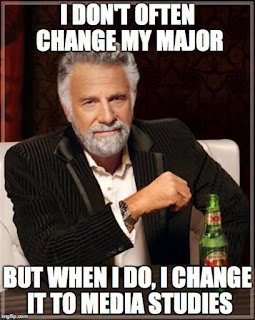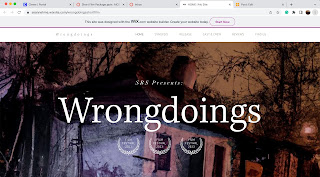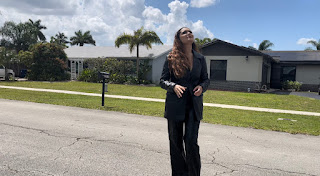CCR Blog
Creative Critical Reflection
1. How does your product use or challenge conventions AND how does
it represent social groups or issues?
Our product
uses conventions, by using things such as kid-like stereotypes. Including things
like messy kid’s drawings and skipping down a hall gives it the fun atmosphere
that is meant to attract a younger audience. Most of these stereotypes are found
in these types of commercials, including most Crayola commercials. Our product
is not only meant to represent younger audiences, but those with creative mindsets
and the ambition to express themselves. It was meant to send the message of
being inclusive to those with or without artistic ability. By looking at most Crayola
commercials and putting ours side by side, you can definitely see similar
assets and conventions used all throughout. It isn’t something that’s meant to
be sleek and organized, but messy and adventurous. Free-spirited individuals,
kids or not, or most likely to find the product appealing.
2. How does your product engage with
audiences AND how would it be distributed as a real media text?
Our product engages with audiences by making sure to throw the product in
your face multiple times. The audience would most likely not be that interested
in a commercial that does not even clearly give the idea of what it is even
about. That is why we make sure to display clear images of our product in
eye-catching shots. Our product would be distributed as a real media text by
using proper forms of advertisement and making sure to skillfully share our
product advertisements with our targeted audience. Our commercial, although not
as professional as most Crayola commercials, has all the proper elements to
make it seem like a legitimate commercial for the product.
3. How did your production skills develop throughout this project?
Throughout this project, I was able to learn a lot about production. I
learned that, although it didn’t seem that important at first, planning of time
gives you a good head start, and will benefit you in the long run, because it
saves a lot of time. Planning helps you stay organized, and without out, you
would be trying to change and figure things out last minute, putting you behind
and not allowing you to finish what you need to do in time. Along with that, I
was able to learn that the little elements that don’t seem like they make that
much of an impact in your project, do. Just a slight change in angle or music,
or even product placement can make a big difference in the final look and
outcome of your media or film. This journey has most definitely taught a lot,
and I will make sure to use the tips and tricks I’ve learned so far for future
projects.
4.
How did you integrate technologies – software, hardware and online – in this
project?
I
integrated technologies in this project by using things like phone cameras to
do our filming, and a simple phone app to edit the clips and final product of the
commercial. Although iPhone camera quality isn’t prime filming hardware, it was
what we had, and it wouldn’t even matter, as long as we used the proper assets
to make our commercial look like and ACTUAL commercial. For the editing, I used
an app called Cute Cut Pro to edit our video. We used the internet to find the
music we wanted to use in the video, and I was able to put all our clips
together (with the music over it) using the app. Not only that but we used the
internet to do our research on the actual product, which without it, our
commercial would not have come out as successfully done as it was.



Comments
Post a Comment